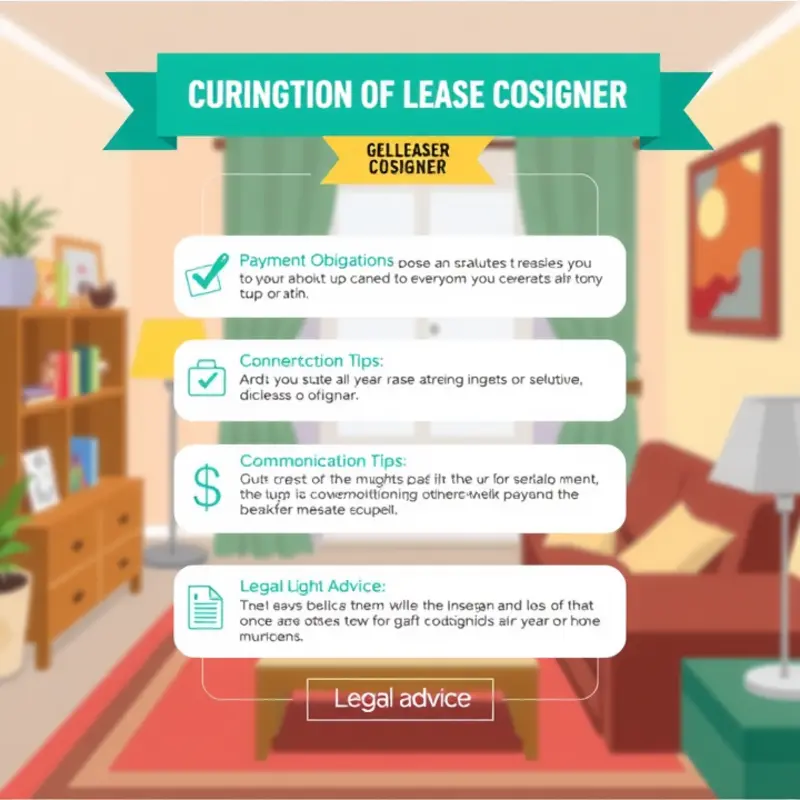Renting a home for the first time can feel overwhelming, especially when it comes to understanding lease agreements. As young professionals, students, couples, or families seeking to secure a rental property, it’s essential to grasp the concept of lease cosigning. A lease cosigner is someone who agrees to take financial responsibility for a renter’s obligations if they fail to make payments. This partnership can provide crucial support and may be a requirement for many landlords. However, serving as a cosigner comes with specific duties and potential risks. Understanding these responsibilities can help both tenants and cosigners establish clear expectations, foster stronger relationships, and ensure financial responsibilities are upheld. This guide will break down what it means to be a lease cosigner, including the obligations involved and how to navigate the process smoothly.
Who is a Lease Cosigner?

In the rental landscape, a lease cosigner is often a crucial element for securing an apartment or home, especially for young professionals and first-time renters. A lease cosigner is an individual who signs the lease agreement alongside the primary tenant. Their primary role is to take on the legal obligation of paying the rent if the tenant fails to do so. This layer of security reassures landlords that the rent will be paid continuously, minimizing financial risk.
The need for a cosigner generally arises when a prospective tenant does not meet the credit score requirements or lacks a sufficient rental history, which is common among young professionals who are just starting out in their careers. Landlords may also request a cosigner when a tenant’s income does not meet the required threshold, typically set at two to three times the monthly rent.
For the tenant, having a cosigner can open doors to rental opportunities that might otherwise be inaccessible. This is particularly beneficial for recent graduates or those transitioning from living at home, who might not yet have the established credit or steady income that landlords require.
However, the responsibilities of a cosigner are significant. By signing the lease, they are legally obligating themselves to cover any unpaid rent and damages that the tenant cannot pay. This commitment can impact the cosigner’s credit score if the primary tenant defaults, as missed payments may be reported to credit bureaus under both parties. Hence, before agreeing to cosign, it is critical for individuals to assess the financial risk and the trustworthiness of the tenant they are supporting.
For young renters, it is essential to have candid conversations with potential cosigners, often family members or close friends, about their financial situation and rental plan. Maintaining transparency can help preserve relationships and ensure that all parties are prepared for the responsibility. Additionally, understanding the role of a lease cosigner can aid renters in preparing a comprehensive application that may minimize the landlord’s perceived risk.
For those navigating their first rental experiences, the process of securing a reliable cosigner can be daunting but essential. As you explore prospective residences, you can also visit our guide on relocating for a job to find practical insights into moving considerations, which often accompany the search for an appropriate place to live. Knowing the expectations and obligations involved in having a lease cosigner can make the rental experience smoother and pave the way for a stable housing situation.
Key Responsibilities of a Lease Cosigner

When you agree to be a lease cosigner, you’re not just lending your name as a gesture of goodwill. Instead, you’re assuming several critical responsibilities. To understand these thoroughly can help you manage your commitments and protect your financial interests effectively.
1. Payment Responsibilities
Cosigning a lease means you provide a financial guarantee to the landlord that all rent payments will be made on time and in full. Should the primary tenant fail to meet these obligations, you are legally bound to cover any unpaid rent. This means that being a cosigner requires a thorough evaluation of your financial stability and willingness to assume potential additional expenses. It’s advisable to ensure the tenant understands their responsibilities, fostering clear communication about the financial expectations.
2. Communication with the Landlord
As a cosigner, maintaining an open line of communication with the landlord is crucial. This means you should be approachable and responsive to the landlord’s inquiries. Clear communication can also be preventive—allowing you to address potential issues before they escalate. If you’re informed by the tenant about difficulties in meeting payment, initiating discussions with the landlord could prevent misunderstandings or legal complications.
3. Legal Implications
There are legal consequences tied to cosigning. If the tenant defaults, you may face credit score impacts and potential legal action from the landlord to recover lost rent. It’s recommended that you review the lease agreement carefully and comprehend its implications. Understanding these terms can save you from unexpected legal troubles.
Managing Relationships
Effective relationships with both the tenant and landlord are pivotal. Having open and honest conversations with the tenant about financial changes or difficulties can preclude misunderstandings. For the landlord, being communicative and cooperative when handling situations can foster a positive rapport, ensuring smoother resolutions to any issues. Prioritize regular check-ins with the tenant; this keeps you informed of any growing issues that might affect your financial commitments.
Insurance and Protections
While not a mandatory step for cosigners, considering options like tenant insurance can provide some protection against unforeseen circumstances, such as property damage that might indirectly affect your financial liability. Though the primary tenant should hold responsibility for this, being part of such discussions can strengthen your joint approach to handling any lease-related concerns.
For further insights on managing landlord obligations effectively, visit our guide on landlord responsibilities. Ensuring you’re well-versed in these mutual obligations can enhance your experience as a cosigner.
Ultimately, the role of a cosigner is significant and requires careful deliberation. By maintaining clear communication, understanding your financial commitments, and being aware of the legal intricacies, you can fulfill your role with confidence and caution.
Final words
Understanding the role and responsibilities of a lease cosigner is vital for a smooth rental journey. For young professionals, students, or families, having a cosigner can mean the difference between securing a beloved home and facing a frustrating search for rental alternatives. By grasping these duties, both cosigners and renters can work together effectively to meet financial obligations and foster trust. Open communication and thorough understanding create a smooth rental experience and protect the interests of everyone involved. Remember, if you’re unsure about any aspect of lease agreements or cosigning, seeking professional advice is always beneficial.









